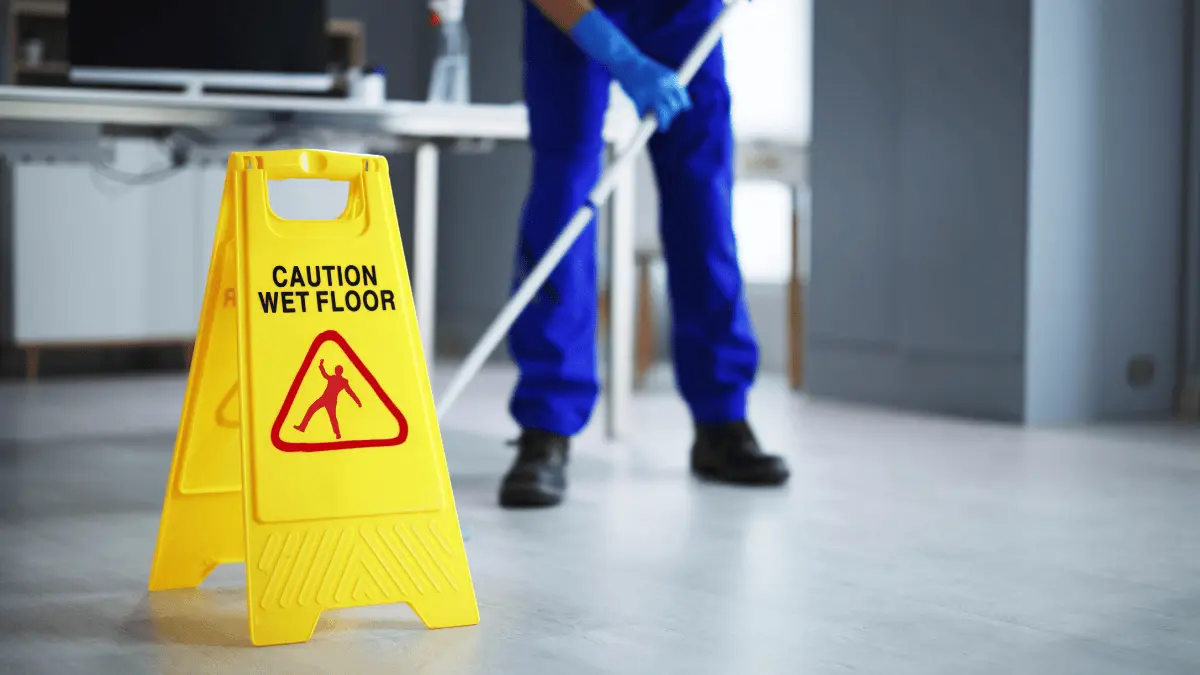Employers reported over 2.8 million injury and illness cases in 2022. A workplace injury can happen in any industry, from manufacturing to finance. You must cultivate and maintain a safe work environment for your employees.
Prepare for injuries. Prevent injuries. And have a plan in place to respond to injuries.
Workers’ comp insurance, personal protective equipment, and workplace incident reports are just some things to know before accidents happen. Read on to learn how to prepare, prevent, and respond to injuries in the workplace.
Skip Ahead
- What is a workplace injury?
- Your responsibilities before injuries happen
- What to do when an employee is injured at work
What is a workplace injury?
A workplace injury is an injury that an employee sustains while performing work for their job. Workplace injuries include slips and falls, car accidents, exposure to harmful substances, and cuts.
An employee can be injured suddenly from an accident or over time through repetitive movements or repeated exposure.
Injuries can be minor or require immediate medical treatment. Some injuries result in permanent disabilities or even death. According to the BLS, there were 2,804,200 nonfatal injuries and illnesses and 5,486 fatal injuries in 2022.
Types of workplace injuries include:
- Slips and falls
- Cuts and lacerations
- Fractures and broken bones
- Strains
- Electrocution
- Burns
- Eye injuries
- Hearing loss
- Respiratory issues
Workplace injuries happen because of unsafe work conditions, insufficient training, carelessness, and fatigue.
What industries experience the most injuries and illnesses?
According to the BLS, the industries that experienced the most nonfatal work injuries and illnesses include:
- Health care and social assistance
- Retail trade
- Manufacturing
- Transportation and warehouse
- Accommodation and food services
- Construction
Some employers offer hazard pay for jobs in industries with hazardous work conditions (e.g., healthcare, mining, and construction). Hazard pay is additional compensation, such as a higher hourly wage or a flat percentage premium. The Fair Labor Standards Act (FLSA) does not require hazard pay.
Although some industries may experience a higher injury rate than other industries, injuries can happen anywhere. All employers should be prepared for potential injuries.
Your responsibilities before injuries happen
Workplace injuries can be serious. Over half of nonfatal work injuries and illnesses result in days away from work, job restrictions, or transfers.
Protect your employees and business before injuries happen through robust HR processes, including:
- Workers’ comp insurance
- Personal protective equipment
- Safety training and education
1. Workers’ comp insurance
An injured employee may require compensation for medical expenses, paid time away from work, or both. Hefty medical expenses—or lawsuits—can cost thousands or millions of dollars, which could destroy your small business.
Workers’ comp insurance provides medical benefits and wage replacement for employees with a job-related injury or illness. Typically, employees waive their right to sue when they accept workers’ comp benefits.
Most states require workers’ compensation insurance if you have employees. You might consider getting pay as you go workers’ compensation so you can pay premiums each time you run payroll.
2. Personal protective equipment
Personal protective equipment (PPE) is clothing or gear employees wear to decrease their chances of injury or illness at work.
PPE includes:
- Gloves
- Goggles and safety glasses
- Earplugs and muffs
- Hard hats and helmets
- Safety shows
- Fall protective equipment
You must pay for PPE that employees use to comply with the Occupational Safety and Health Administration (OSHA) standards. You may also need to pay employees for donning and doffing, which is the time it takes them to put on and take off PPE.
3. Safety training and education
Train employees on safety procedures and how to use equipment. Training resources may include in-person programs, videos, brochures, and interactive web-based training. Also, hang the OSHA labor law poster somewhere employees can easily see it.
According to OSHA, successful injury and illness prevention programs include:
- Management leadership
- Worker participation
- Hazard identification
- Hazard prevention and control
- Education and training
- Program evaluation and improvement
In the event of an injury, an incident investigator will ask you if the employee received adequate training to do their job. Record all safety and health training so you are prepared to answer this question.
What to do when an employee is injured at work
Sixty-four percent of workers have had an accident at work that’s gone unreported, while 46% of workers don’t know how to report an accident.
Don’t let these statistics represent your small business. Your employees should know how to report everything from slips and falls to industrial industry claims.
Here is a basic guide on the steps to take following a workplace injury.
1. Get the employee help
First and foremost, get the injured employee the help they need. Call 911 immediately if the injury is serious. Grab your company’s first aid kit and administer first aid, if applicable. You may also need to arrange for someone to take the injured employee to a hospital, if necessary.
Meanwhile, stop work and make sure your other team members are safe from further injury as needed.
2. File a workplace incident report
A workplace incident report provides a timely and detailed account of the employee’s injury and event. Employers covered by the OSH Act must fill out a report.
Take photos and gather information from the injured employee, if able, and other team members. Document what the employee was doing before the incident, detail the incident, and provide information about the injury.
Follow OSHA’s reporting requirements and keep all workplace incident reports in your records for at least five years.
3. Assist with workers’ compensation claims
Your injured employee may need to file a workers’ compensation claim to receive compensation for medical expenses and time away from work.
Provide information about your workers’ comp insurance and assist the employee with claiming benefits. There is a statute of limitations (e.g., one year) for filing workers’ comp claims, so encourage employees to take action early.
4. Improve safety procedures
Conduct a thorough investigation to learn more about the incident. Why did it happen? How can you prevent it in the future?
Identify and document workplace hazards to prevent similar situations from occurring in the future. Take steps to address any hazards, such as providing additional safety training or improving processes.
Communicate the incident and all changes to prevent future occurrences with your employees.
This is not intended as legal advice; for more information, please click here.



